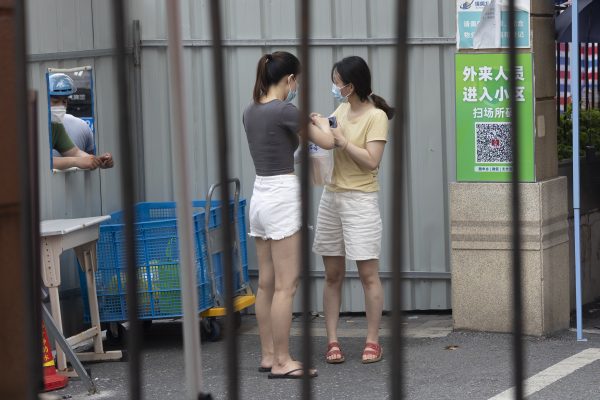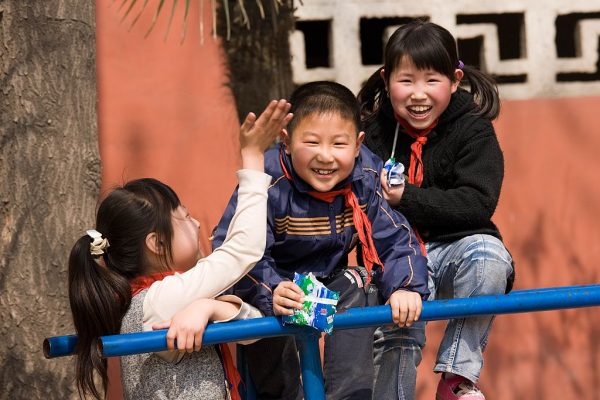According to the People’s Republic of China (PRC) National Health Commission, the COVID-19 pandemic has “had a clear impact on the marriage and childbirth arrangements of some people,” as reported by Reuters on Aug. 22.
Since the initial outbreak of the novel coronavirus SARS-CoV-2 that originated in Wuhan, hundreds of millions of Chinese have experienced some form of government-imposed lockdown, with multiple cities having been subject to weeks of crippling “zero-COVID” policies.
The isolation and economic disruptions have added to “profound changes” — per the commission — in China over the last few decades that have seen the country’s birthrate drop precipitously as economic and social modernization raised the bar for being able to comfortably have children.
Those “profound changes” have prompted an increasing number of Chinese women to put off marriage and children, if not forgo family creation entirely.
READ MORE
- China’s Delayed Census Points to Severe Population Decline
- Communist Politics Are Bringing Disaster to China–And Xi Jinping
- Battered by Intense Heat and Drought, China’s Sichuan Province Warns of ‘Particularly Severe’ Electricity Cuts
The commission added in its faxed response to the Reuters inquiry that the relocation of youth to urban areas, lengthy years spent on education, and highly competitive professional scene have all taken their toll on China’s demographics.
Success
You are now signed up for our newsletter
Success
Check your email to complete sign up
Over two years of strict “zero-COVID” policies have added to China’s worrying economic slowdown and other societal challenges. Schools, workplaces, restaurants, bars, and all kinds of industries and public venues have been made to lock down or driven out of business, paralyzing the economy and fueling increasing public outrage.

Political reversals
Long the world’s most populous country, China is expected to soon lose that title to India, which as of July 1, 2021 counted 1.393 billion people.
According to an article by the National Health Commission published Aug. 1 in Communist Party outlet Qiushi, the 1.4 billion-strong Chinese population grew by just 480,000 from the end of 2020 to the end of 2021.
China’s 2020-to-2021 year-on-year population growth of just 480,000 highlights the severity of the trend: In 2016, by contrast, China added a total of 9.06 million people, meaning that population growth dropped by nearly 19 times in just a few years.
The article warned that by 2025, the Chinese population will begin to shrink. According to the health commission, China’s total fertility rate — or the average number of children each woman is expected to bear — has now fallen below 1.3.
2.1 children per woman is regarded as the minimum TFR needed to prevent population decline.
The National Health Commission was silent on the role of Beijing’s longstanding one-child policy in fueling China’s population implosion. Starting in 1979, the Chinese Communist Party (CCP) imposed broad restrictions on childbirths, leading to hundreds of millions of forced abortions, sterilizations, abandoned or murdered newborns, and other “prevented” births.

Though China’s TFR dipped below 2.1 in 1992, the Party was slow to change its policy; only in 2016 was the one-child limit modified to allow two children per married couple.
According to new legislation passed in May 2021, Chinese couples are now permitted three children, and propaganda has shifted from anti-natalist rhetoric to encourage more fecundity for the sake of the country.
However, these calls have had no discernible effect as Chinese youth increasingly report that having even one child is a challenge. The phenomena of “involution” (內卷, nei juan) brought about by the highly competitive “996” or “007” work culture, shrinking job pool, and intense pressure to acquire material wealth have caused many youth to “lie flat,” pursuing minimalist lifestyles that preclude marriage and children.
READ MORE:
- In Leaked Recording, Elite Chinese Scholar Laments Crippling Dysfunction of Communist Regime
- Chinese Protesting Frozen Bank Accounts Just the Tip of the Iceberg in Beijing’s Widening Financial Crisis
- 10,000 Millionaires Expected to Leave China This Year–And Take $48 Billion With Them: Report
The demographic trap
While demographic decline does not happen rapidly, countries that do not have enough children to replace the aged population struggle to maintain economic prosperity as the number of available workers drops, pushing retirement ages up, reducing social benefits, and placing greater burden on the dwindling numbers of youth — including women of child-bearing age — fueling a vicious cycle.
The PRC’s cratering fertility rate is comparable to those of other developed countries in the East Asian region. Japan, which has been watched as an aging society since the late 1980s, had a TFR of 1.37 in 2022. According to the CIA, Taiwan estimates that each woman will have 1.08 children, while South Korea has the lowest TFR on earth, dropping to just 0.81 children per woman by the end of 2021.
Less affluent than its neighbors to the north, Vietnam maintained a TFR of just over 2 in 2019. Meanwhile, women in North Korea, the isolated totalitarian state that suffers near-constant food shortages, can still expect to have an average of 1.9 children.
















